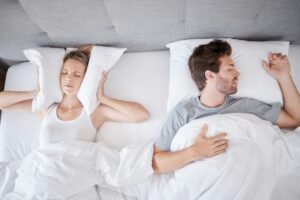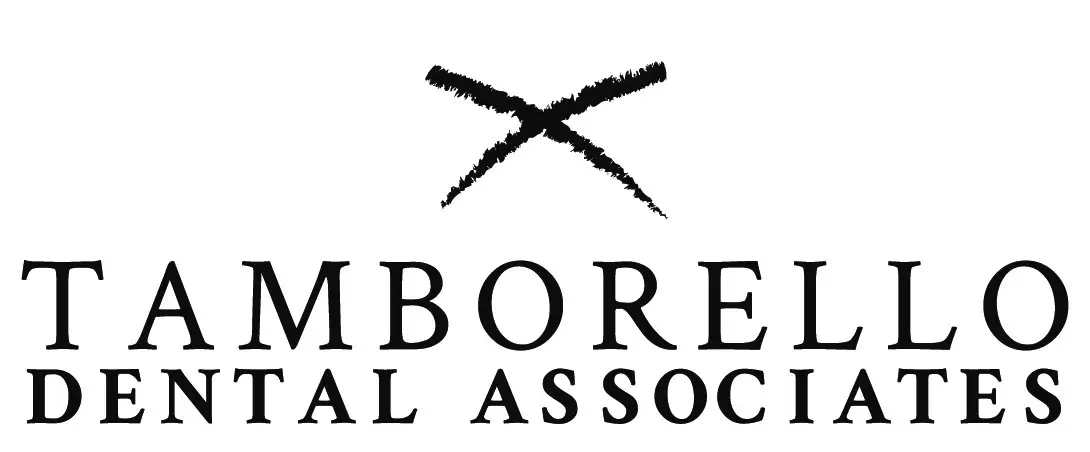Dental Appliance Sleep Apnea Success Rate
Sleep apnea is a common sleep disorder that affects millions of people worldwide. It's characterized by repeated interruptions in breathing during sleep.

One of the most common treatments for sleep apnea is a Continuous Positive Airway Pressure (CPAP) machine. However, not everyone can tolerate this treatment.
This is where dental appliances come into play. They offer an alternative solution for those who find CPAP machines uncomfortable or inconvenient.
Dental or oral appliances are custom-made devices that help keep the airway open during sleep. They work by repositioning the lower jaw and tongue.
But how effective are these dental appliances in treating sleep apnea? What is their success rate? And what factors influence this rate?
In this article, we delve into these questions. We aim to provide comprehensive information on the success rate of dental appliances for sleep apnea treatment.
This guide is for patients seeking alternatives to CPAP, healthcare professionals, or anyone interested in sleep solutions. Let's explore the world of dental appliances and their role in treating sleep apnea.
Understanding Sleep Apnea and Its Treatments
Sleep apnea is a severe sleep disorder. It causes breathing to stop and start repeatedly during sleep.
There are three main types of sleep apnea: obstructive, central, and complex. The most common type is obstructive sleep apnea (OSA).
Treatment for sleep apnea is crucial. Untreated sleep apnea can lead to serious health complications, including heart disease and stroke.
Various treatment options for sleep apnea are available, including lifestyle changes and oral appliances, CPAP machines, and surgery.
What is Obstructive Sleep Apnea (OSA)?
Obstructive sleep apnea occurs when the muscles in the back of the throat relax. This causes the airway to narrow or close as you breathe in.
Symptoms of OSA include loud snoring, gasping for air during sleep, and daytime sleepiness. It's often diagnosed through a sleep study.
OSA can affect anyone, regardless of age or gender. However, certain factors increase the risk, including obesity, smoking, and having a family history of sleep apnea.
The Standard CPAP Solution
Continuous Positive Airway Pressure (CPAP) is the standard treatment for OSA. It involves wearing a mask over the nose and mouth during sleep.
The CPAP machine delivers a constant stream of air. This keeps the airway open and prevents apnea events.
However, some people find CPAP machines uncomfortable or noisy. Compliance can be a challenge, limiting the effectiveness of this treatment.
Exploring Dental Appliances as a Sleep Solution
Dental appliances offer an alternative to CPAP for treating OSA. They are custom-made devices that fit in the mouth, similar to a sports mouthguard.
These appliances work by repositioning the lower jaw and tongue. This helps keep the airway open during sleep.
Dental appliances are often used for mild to moderate OSA. They can also be a good option for those who cannot tolerate CPAP therapy.
Dental Appliances for Sleep Apnea: Types and Functions
Dental appliances for sleep apnea are designed to maintain an open, unobstructed airway while you sleep. They are often referred to as oral appliances or mandibular advancement devices.
These devices are custom-made by dental professionals and designed to fit comfortably in the mouth while you sleep.
There are two main types of dental appliances for sleep apnea: Mandibular Advancement Devices (MADs) and Tongue-Retaining Devices (TRDs).
Mandibular Advancement Devices (MADs)
Mandibular Advancement Devices are the most common type of dental appliance for sleep apnea. They look similar to a mouth guard used in sports.
MADs work by moving the lower jaw forward. This helps keep the airway open, reducing the risk of apnea events during sleep.
MADs are adjustable, allowing the device to be set to the most effective and comfortable position for each individual.
Tongue-Retaining Devices (TRDs) and Other Oral Appliances
Tongue-retaining devices are another type of dental appliance for sleep apnea. They work by holding the tongue forward, preventing it from falling back and blocking the airway.
TRDs can be a good option for individuals who cannot tolerate a MAD. However, they are not as commonly used as MADs.
Other types of oral appliances include combination devices, which combine the functions of MADs and TRDs or work with CPAP therapy.
Evaluating the Success Rate of Dental Appliances
The success rate of dental appliances in treating sleep apnea varies widely. It can range from 50% to 70%, depending on various factors.
One key measure of success is reducing the apnea-hypopnea index (AHI), which measures the number of sleep apnea and hypopnea events per hour.
Another measure of success is the improvement in symptoms. These include reduced daytime sleepiness, improved sleep quality, and decreased snoring.
Patient satisfaction and compliance also play a crucial role in the success of dental appliance therapy.
Factors Influencing Success Rates
Several factors can influence the success rate of dental appliances. One of the most significant is the severity of sleep apnea.
The design and fit of the appliance also play a crucial role. A well-fitted and comfortable appliance can improve compliance and effectiveness.
Patient-specific factors such as body mass index (BMI), age, and lifestyle habits can also impact the success rate of dental appliance therapy.
Comparing Success Rates: Dental Appliances vs. CPAP
Dental appliances have comparable success rates for mild to moderate sleep apnea compared to treatment standard CPAP t.
However, CPAP remains the most effective treatment for severe sleep apnea. Despite this, patient compliance with CPAP is often lower than with dental appliances due to comfort and convenience issues.
Patient Compliance and Satisfaction
Patient compliance is a critical factor in the success of dental appliance therapy. Dental appliances' ease of use and comfort often lead to higher compliance rates than CPAP.
Patient satisfaction is also linked to the success of dental appliance therapy. Many patients, especially travelers, prefer dental appliances over CPAP due to their portability and convenience.
Regular follow-ups with healthcare providers and ongoing adjustments to the appliance can further improve patient compliance and satisfaction.
The Role of Comfort and Convenience
Comfort and convenience play a significant role in patient compliance. Dental appliances are custom-fitted, making them more comfortable than one-size-fits-all CPAP masks.
Dental appliances' convenience, such as their portability and ease of cleaning, also contributes to higher compliance rates. This mainly benefits patients who travel frequently or find CPAP machines cumbersome.
Long-term Compliance and Follow-up
Long-term compliance with dental appliance therapy requires regular follow-ups with a healthcare provider. These follow-ups ensure the appliance continues to fit well and function effectively.
Regular dental check-ups are also essential to monitor the health of teeth and gums while using an oral appliance. This proactive approach can help prevent potential side effects and ensure the long-term success of the treatment.
Side Effects and Considerations
While dental appliances are generally well-tolerated, they can have potential side effects. These may include jaw discomfort, tooth movement, or changes in bite. However, these side effects are usually minor and can be managed with regular follow-ups and adjustments.
Potential Side Effects of Oral Appliances
Oral appliances can cause some discomfort, especially in the initial stages of use. These side effects can include jawn bite, pain, and changes in tooth movement. However, these side effects are typically temporary and decrease over time.
Some patients may also experience excessive salivation or dry mouth. These side effects are usually minor and can be managed with adjustments to the appliance and good oral hygiene practices.
Addressing Side Effects and Ensuring Proper Fit
Addressing potential side effects is crucial to the success of dental appliance therapy. Regular follow-ups with a dental professional can help manage these side effects and ensure the appliance fits appropriately.
The appliance's fit can change over time due to wear and tear or changes in dental anatomy. Regular adjustments can ensure the appliance continues to function effectively and remains comfortable for the patient. This proactive approach can help prevent potential side effects and ensure the long-term success of the treatment.
The Future of Dental Appliance Therapy
The field of dental appliance therapy is rapidly evolving. Advances in technology and design are improving the success rates and comfort of oral appliances. The future looks promising as research continues to explore the long-term effects of oral appliance therapy on sleep apnea.
Technological Advancements and Research
Technological advancements are making tracking the compliance and effectiveness of oral appliances easier. Digital scanning and 3D printing are used to create precise and comfortable appliances, and they are expected to improve dental appliance therapy's success rates.
Research is also ongoing to explore the long-term effects of oral appliance therapy. This research is crucial to further understanding the role of dental appliances in treating sleep apnea and improving patient outcomes.
The Expanding Role of Dental Professionals in Sleep Medicine
Dental professionals' roles are expanding in sleep medicine. As the success of oral appliances becomes more recognized, dentists play a more significant role in diagnosing and treating sleep apnea.
Dental professionals work closely with sleep physicians to provide comprehensive patient care. This collaborative approach is key to optimizing the success of oral appliance therapy. The future of dental appliance therapy will likely see even greater collaboration between dentists, sleep physicians, and patients.
Conclusion: Making an Informed Decision
Choosing the proper treatment for sleep apnea is a personal decision that should be made after a thorough evaluation. Dental appliances offer a promising alternative to CPAP, especially for patients with mild to moderate OSA.
Summary of Key Points
Dental appliances have shown success in treating sleep apnea, with factors such as patient compliance, appliance design, and severity of sleep apnea influencing the success rates. They offer a non-invasive, comfortable, and convenient sleep solution, especially for those who cannot tolerate CPAP.
Final Thoughts on Dental Appliances for Sleep Apnea
While dental appliances may not be suitable for everyone, they represent a significant advancement in sleep medicine. As research continues and technology advances, the future of dental appliance therapy looks promising.
We are passionate about quality sleep at Houston Sleep Associates (HSA) in Houston, TX. Our years of experience ensure that patients receive the best care customized to their needs and desires!
Schedule a Consultation
See what we offer if you've ever thought about improving your sleep. Schedule a consultation and experience the warmth, professionalism, and transformative power of sleep at HSA. Your journey to a brighter, more confident day begins with a single step. Let's take it together!
Other Related Sleep Apnea Articles:
1. How to Keep My Airway Open without a CPAP Machine? (houstonsleepassociates.com)
2. Oral Appliance Therapy to Stabilize Airway in Respiratory Care (houstonsleepassociates.com)
3. Do mouth pieces work for sleep apnea? - Houston Sleep Associates
4. Improving Quality of Rest: The Benefits of Oral Appliances (houstonsleepassociates.com)
5. Improving Sleep Apnea: The Best Sleeping Position Revealed (houstonsleepassociates.com)
6. Effective Strategies to Stop Snoring Tonight - Houston Sleep Associates
7. Causes and Solutions for Jaw Popping - Houston Sleep Associates
8. How Sleep Apnea Speeds Up Aging - Houston Sleep Associates

